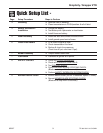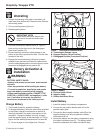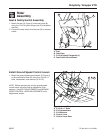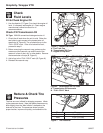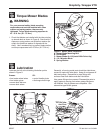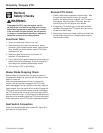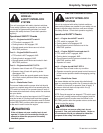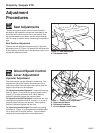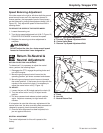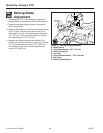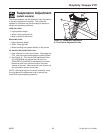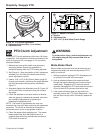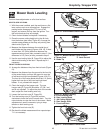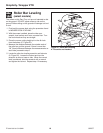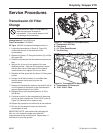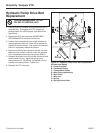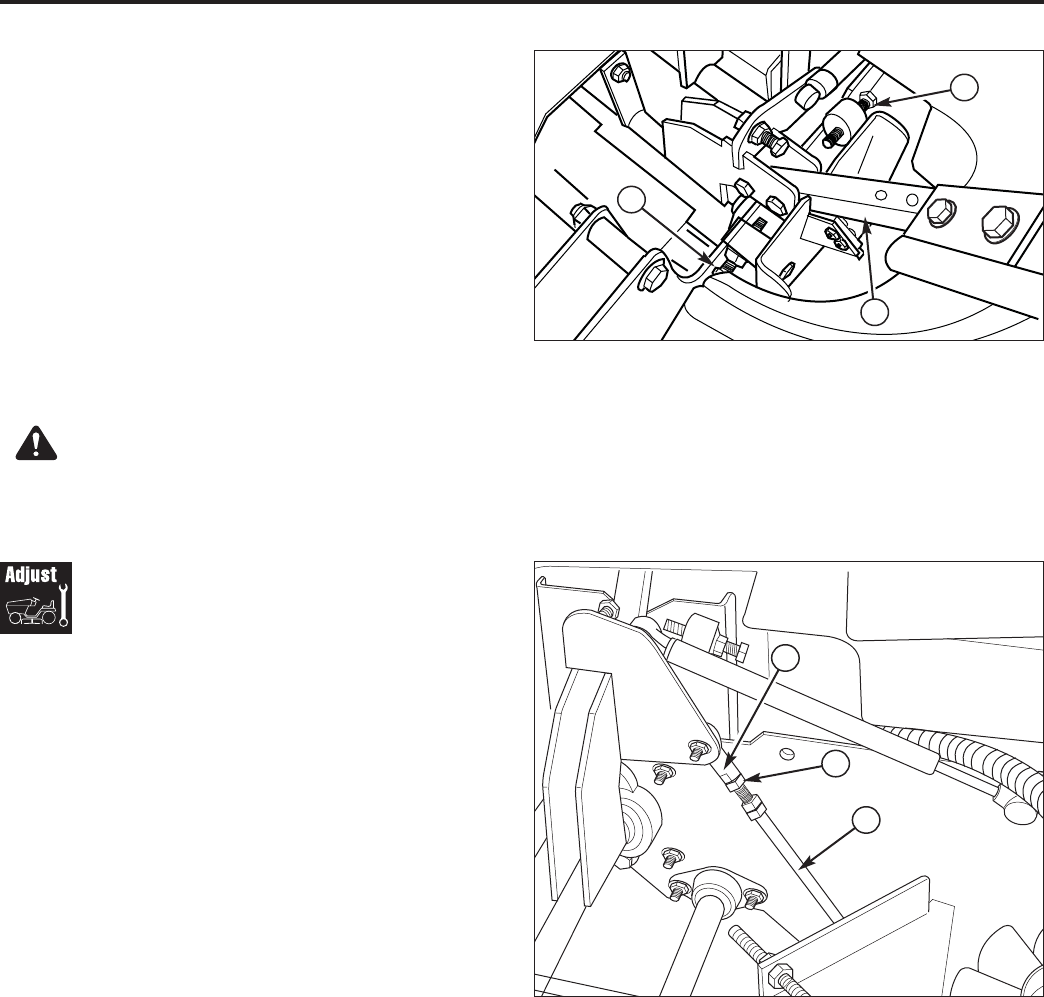
Simplicity / Snapper ZTR
8/2007 11
TP 300-7337-01-CH-SMN
WARNING
DO NOT adjust the rider for a faster overall speed
forward or reverse than it was designed for.
Return-To-Neutral &
Neutral Adjustment
RETURN-TO-NEUTRAL ADJUSTMENT
To determine if it is necessary to adjust the neutral
return, perform the following steps.
1. Disengage the PTO, engage the parking brake and
turn off the engine.
2. Move the ground speed control levers into the
operating position, pull levers rearward and release.
3. Move the ground speed control levers out towards
the neutral position. If the levers do not align with the
notches in the neutral lock plate, it is necessary to
adjust the neutral return rod (C, Figure 13).
TO ADJUST:
1. Loosen the jam nut (B) locked against the clevis (A).
2. Turn the neutral return rod (C) to adjust handle
position.
4. Pull lever rearward and release to check position
again. Adjust as necessary to align levers with
notches.
It is important to note that after every adjustment of the
neutral return rod, the lever must be pulled rearward and
released to properly check the neutral position.
5. Once the lever alignment has been adjusted, lock
jam nut against the clevis.
NEUTRAL ADJUSTMENT
The neutral adjustment for this unit is preset at the
factory.
Figure 12. Top Speed Adjustment
A. Forward Top Speed Adjustment Bolt
B. Control Lever Base
C. Reverse Top Speed Adjustment Bolt
Figure 13. Return-To-Neutral Adjustment
A. Clevis
B. Jam Nut
C. Neutral Return Rod
B
C
Speed Balancing Adjustment
If the rider veers to the right or left when both the ground
speed control levers are in the maximum forward or
reverse position, the top speed of each of these levers
can be balanced by turning the adjustment bolt(s) (A & C,
Figure 12). Only adjust the speed of the wheel that is
traveling faster.
TO REDUCE THE SPEED OF THE FASTER WHEEL
1. Loosen the securing nut.
2. Turn the top speed adjustment bolt (A & C, Figure 12)
COUNTER-CLOCKWISE to reduce the speed.
3. Retighten the securing nut when adjustment is
complete.
A
A
B
C



